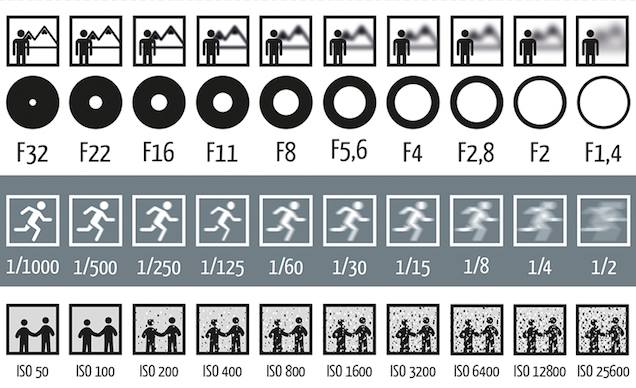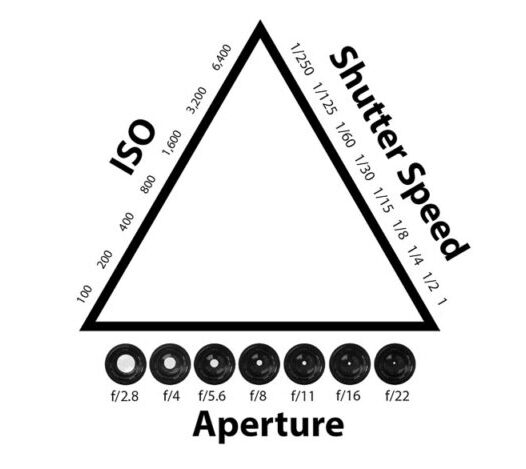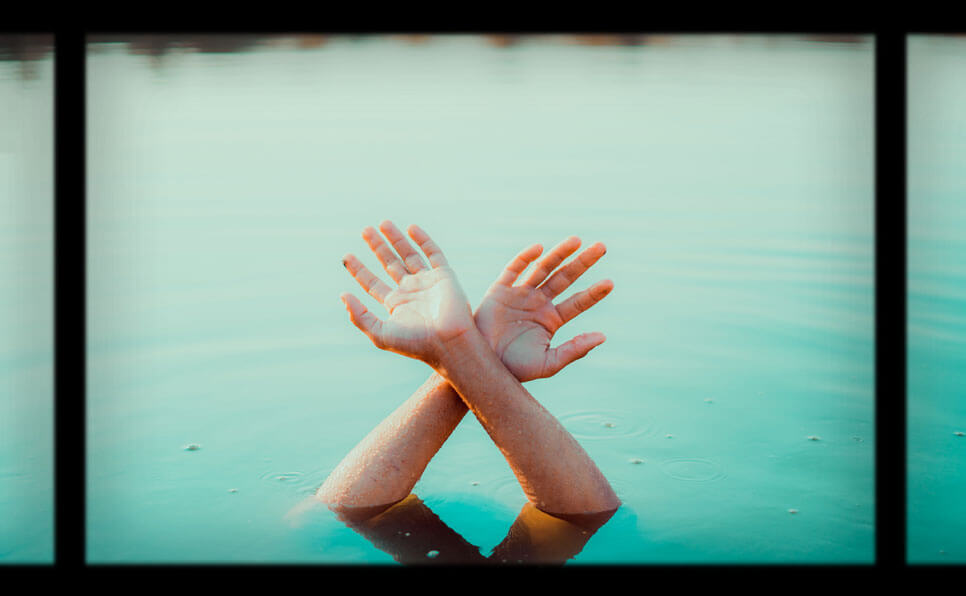Are you ready to capture stunning photos but don’t know where to start? Welcome to “Photography 101,” your essential guide to mastering the art of photography.
Whether you’re a complete beginner or looking to refine your skills, understanding the basics is crucial. Imagine transforming your photos from ordinary to extraordinary with just a few simple techniques. This guide will walk you through everything you need to know about exposure, camera settings, and composition. Curious to dive deeper? Discover more with the Photography 101: Pocket Guide. This book is your compact companion on the journey to capturing beautiful moments. Don’t just take pictures—create art. Read on to unlock the secrets of photography that will leave your friends and followers in awe.
Introduction To Photography Basics
Photography is an art form that captures moments, stories, and emotions. Understanding its basics helps beginners create impactful images. The foundation of photography involves understanding key elements like exposure, composition, and camera settings. By mastering these components, photographers can enhance their skill set and produce stunning photographs. This guide will introduce essential photography concepts, providing a solid starting point for any aspiring photographer.
Understanding The Purpose Of Photography
Photography serves numerous purposes, from documenting history to expressing creativity. Each photograph tells a unique story, conveying emotions and messages. Whether used for personal memory or professional work, photography bridges communication gaps. It allows individuals to share perspectives and experiences visually. Understanding this purpose helps photographers connect with their audience, creating meaningful and lasting impressions.
How Mastering Basics Enhances Your Photography Skills
Mastering photography basics significantly improves image quality and creativity. Learning exposure basics helps balance light and shadow, enhancing photo clarity. Understanding camera settings allows for better control over the final image. These settings include aperture, shutter speed, and ISO. Familiarity with lens types informs decisions on depth and focus. Effective composition techniques guide the viewer’s eye, highlighting the subject. By building this foundational knowledge, photographers can confidently explore advanced techniques.
- Exposure Basics: Balance light for clearer images.
- Camera Settings: Control image outcomes with aperture, shutter speed, ISO.
- Lens Info: Choose lenses for desired depth and focus.
- Composition Tips: Use techniques to draw attention to subjects.
Photography is about capturing a moment and evoking emotion. A firm grasp of its basics lays the groundwork for powerful storytelling through images.

Credit: beckythompson.com
Essential Equipment For Beginners
Photography can be an enriching hobby. Understanding the essential equipment is crucial for beginners. A good camera, versatile lenses, and handy accessories can greatly enhance your experience. Let’s explore these elements in detail.
Camera Types: Choosing The Right One For You
Choosing the right camera is the first step. There are various types:
- DSLRs: Known for excellent image quality and flexibility. They offer interchangeable lenses and manual settings.
- Mirrorless Cameras: Compact and lightweight, offering great image quality. They have no mirror mechanism.
- Point-and-Shoot: Small and easy to use. Ideal for simple, everyday photography.
Consider your budget and needs. Think about portability and the kind of photography you enjoy.
Lenses: Importance And Types For Various Shots
Lenses are vital for capturing different perspectives. Here are some common types:
- Prime Lenses: Fixed focal length. Known for sharp images and wide apertures.
- Zoom Lenses: Variable focal length. They offer versatility for different scenes.
- Wide-Angle Lenses: Capture more of the scene. Ideal for landscapes and architecture.
- Telephoto Lenses: Perfect for distant subjects. Great for wildlife and sports.
Understand what you want to shoot. Choose lenses that suit your style.
Accessories: Tripods, Filters, And More
Accessories can enhance your photography. Some essentials include:
- Tripods: Keep your camera steady. Useful for low-light shots and long exposures.
- Filters: Enhance colors and reduce reflections. Polarizing filters are popular for landscapes.
- Camera Bags: Protect your gear. Choose one with enough space and padding.
- Memory Cards: More storage for your photos. Opt for reliable brands with fast write speeds.
Invest in quality accessories. They can greatly impact your photography journey.
Core Photography Concepts
Understanding the core concepts of photography is essential for capturing stunning images. These foundational elements include Exposure Triangle, Composition Techniques, and Lighting. Mastering these will improve your photography skills significantly.
Exposure Triangle: Aperture, Shutter Speed, And Iso
The Exposure Triangle is vital for controlling how light interacts with your camera. It consists of three elements:
- Aperture: Controls the amount of light entering the lens. A wider aperture (low f-number) allows more light and creates a shallow depth of field, blurring the background.
- Shutter Speed: Determines the duration the camera sensor is exposed to light. Fast shutter speeds freeze motion, while slow speeds can create motion blur.
- ISO: Adjusts the camera’s sensitivity to light. A higher ISO is useful in low light but can introduce noise into the image.
Composition Techniques: Rule Of Thirds, Leading Lines, And Framing
Composition defines the arrangement of elements in your photo:
- Rule of Thirds: Divides the frame into a grid of nine equal rectangles. Place key elements along the lines or at intersections for balanced and engaging photos.
- Leading Lines: Use lines to guide the viewer’s eye through the image. Roads, pathways, or architectural features can create a sense of direction.
- Framing: Surround your subject with elements to draw focus. Natural frames like trees or windows enhance depth and context.
Lighting: Natural Vs. Artificial And How To Use Them
Lighting sets the mood and tone of your photograph:
| Type | Characteristics |
|---|---|
| Natural Light | Soft, dynamic, varies by time of day. Golden hour offers warm tones. |
| Artificial Light | Consistent, controllable, includes flash and studio lighting. Useful indoors. |
Utilize natural light for outdoor settings. Artificial light is excellent indoors or when specific effects are desired.

Credit: lastandardnewspaper.com
Post-processing Essentials
Post-processing transforms raw images into stunning visual stories. Mastering this skill is crucial for photographers. It enhances your photos and brings out their full potential. Let’s explore the essentials of post-processing in photography.
Introduction To Editing Software
Editing software is a photographer’s best friend. Popular options include Adobe Lightroom and Photoshop. These tools offer a range of features to elevate your photos. They provide adjustments for exposure, color balance, and much more.
- Adobe Lightroom: Ideal for beginners. It offers simple sliders for quick edits.
- Photoshop: Best for advanced editing. It provides detailed control over every aspect.
Free alternatives like GIMP and Darktable are also available. They provide similar functionalities without the cost.
Basic Editing Techniques To Enhance Your Photos
Start with basic edits to enhance your images. Adjusting brightness and contrast can improve clarity. Cropping helps focus on the main subject.
- Brightness and Contrast: Increase brightness to lighten dark photos. Adjust contrast to make colors pop.
- Cropping: Remove distractions by trimming edges. This draws attention to the subject.
- Sharpness: Enhance details for a crisp image. Avoid over-sharpening to prevent noise.
These simple adjustments can dramatically improve your photos.
Understanding Color Correction And Retouching
Color correction ensures photos look natural and vibrant. Adjust white balance to fix color casts. This makes whites appear true and colors balanced.
| Feature | Purpose |
|---|---|
| White Balance: | Neutralizes color tones for realistic hues. |
| Hue and Saturation: | Adjusts specific colors for better harmony. |
Retouching involves removing blemishes and imperfections. Use tools like the clone stamp or healing brush for best results. This process enhances portraits and product images.
Common Mistakes And How To Avoid Them
Photography is a beautiful art form, but beginners often face challenges. Understanding common mistakes and learning how to avoid them can elevate your skill level. This section addresses frequent errors and provides solutions to improve your photography.
Overcoming Blurry Images
Blurry images are a common issue. Shutter speed plays a crucial role in capturing clear photos. Use a faster shutter speed to reduce blur, especially in motion shots.
- Use a tripod for stability.
- Check your camera settings.
- Practice holding your camera steady.
Low light can also cause blur. Adjust ISO settings to compensate for poor lighting conditions. Experiment with different settings to find the best option for your environment.
Avoiding Overexposure And Underexposure
Exposure affects image brightness. Overexposure leads to washed-out photos, while underexposure makes them too dark. Aperture and ISO settings are vital for balancing exposure.
| Exposure Type | Solution |
|---|---|
| Overexposure | Lower ISO and close aperture. |
| Underexposure | Increase ISO and open aperture. |
Use your camera’s exposure compensation feature to adjust exposure without changing other settings. Practice adjusting these settings in different lighting conditions.
Understanding And Correcting Composition Errors
Composition is key to engaging photos. Mistakes in composition can make images appear cluttered or unbalanced. Use the rule of thirds to frame your subject effectively.
- Imagine a grid with two horizontal and two vertical lines.
- Place points of interest at intersections.
- Ensure your subject aligns with one of these lines.
Consider leading lines to guide the viewer’s eye and create depth. Use natural elements or structures to create these lines.
Balance is essential. Avoid placing subjects directly in the center. Experiment with angles to find the best composition for your shot.

Credit: liveseasoned.com
Tips For Practicing And Improving
Photography is a craft that thrives on continuous practice and learning. Whether you’re a beginner or have some experience, honing your skills requires dedication and the right approach. Here are some tips to elevate your photography game.
Daily Photography Exercises To Hone Your Skills
Engage in daily exercises to improve your photography skills. Regular practice helps in mastering camera settings and composition.
- Dedicate a few minutes each day to capture different subjects.
- Experiment with lighting and angles for better results.
- Focus on specific techniques, like exposure or lens adjustments.
Consistency is key in building confidence and enhancing creativity. Challenge yourself with new scenarios to keep learning.
Joining Photography Communities For Feedback
Connect with photography communities to receive valuable feedback. These groups offer insights from experienced photographers.
- Share your work and ask for constructive criticism.
- Participate in photo challenges to test your skills.
- Learn from others’ experiences and techniques.
Engagement in communities fosters growth and helps in refining your craft. Feedback can guide you in understanding areas for improvement.
Keeping A Photography Journal For Progress Tracking
Maintain a photography journal to track your progress. Documenting your journey offers clarity on your development.
| Journal Element | Purpose |
|---|---|
| Daily Photos | Track improvements and consistency. |
| Techniques Used | Identify what works best for you. |
| Feedback Received | Reflect on suggestions and adapt. |
A journal aids in setting goals and celebrating milestones. It is a personal roadmap to becoming a better photographer.
Recommendations For Aspiring Photographers
Embarking on a journey in photography can be both exciting and overwhelming. Finding the right path to hone your skills is crucial. Aspiring photographers often wonder where to start, how to practice, and ways to showcase their work effectively. This guide will provide valuable recommendations to help you navigate these early stages.
Best Resources For Learning And Inspiration
Learning photography is an ongoing process. Books and online resources can be great starting points. One recommended resource is the Photography 101: Pocket Guide. This book covers essential topics like exposure basics, camera settings, and composition tips. Websites like Fstoppers and Digital Photography School offer valuable articles and tutorials.
- Books: Photography 101: Pocket Guide
- Websites: Fstoppers, Digital Photography School
- Online Courses: Coursera, Udemy
Ideal Scenarios For Practicing Your Skills
Practice makes perfect. Exploring different scenarios can greatly enhance your skills. Natural light is a great teacher. Early mornings and late afternoons offer soft lighting. Urban environments provide unique angles and subjects. Try shooting in parks for nature photography.
- Golden Hour: Mornings and evenings offer the best natural light.
- Urban Exploration: Capture architecture and street life.
- Nature Settings: Practice composition and focus in parks and gardens.
How To Build Your Portfolio And Showcase Your Work
A strong portfolio is essential for any photographer. Start by selecting your best shots. Use online platforms like Behance or Flickr to showcase your work. Creating a personal website can also boost your visibility. Participate in local exhibitions and online contests to gain exposure.
| Platform | Purpose |
|---|---|
| Behance | Professional Showcase |
| Flickr | Photo Sharing |
| Personal Website | Brand Building |
| Exhibitions | Local Exposure |
| Contests | Gain Recognition |
Frequently Asked Questions
What Are The 5 C’s Of Photography?
The 5 C’s of photography are Composition, Contrast, Clarity, Color, and Creativity. Each element enhances image quality and impact. Composition organizes elements, Contrast adds depth, Clarity ensures sharpness, Color evokes emotion, and Creativity brings uniqueness. Mastering these can elevate your photography skills significantly.
What Is The 20-60-20 Rule In Photography?
The 20-60-20 rule in photography divides the composition into percentages. Allocate 20% to the foreground, 60% to the midground, and 20% to the background. This technique helps create balanced and visually appealing images, enhancing depth and interest in photographs.
What Are The 7 Elements Of Photography?
The 7 elements of photography are line, shape, form, texture, color, space, and value. These elements help create compelling and visually appealing photos. Understanding and utilizing them effectively enhances the composition and storytelling of your images.
How Do I Start Learning Photography?
Begin by choosing a camera and exploring online photography tutorials. Practice regularly to improve skills. Join photography forums or groups for feedback. Experiment with different settings and techniques. Consider taking a photography course for structured learning.
Conclusion
Photography opens a world of creativity and fun. Anyone can learn the basics. Practice makes perfect with exposure and composition. This guide offers simple tips for beginners. A must-have for every aspiring photographer. Discover techniques to capture stunning images. Check out the Photography 101: Pocket Guide for more details. Enhance your skills with easy-to-follow advice. Photography can be enjoyable and rewarding. Start exploring today!



